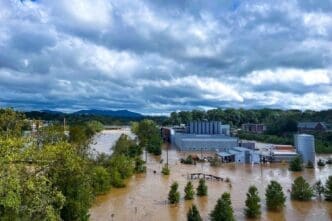In the aftermath of Hurricane Helene, Asheville, North Carolina faced significant challenges as local water systems were heavily disrupted. The severe flooding led to a prolonged boil water advisory, affecting the daily lives of residents.
The destructive power of Hurricane Helene was vividly witnessed in Asheville, where the storm caused widespread flooding, leading to a collapse of the city’s vital water infrastructure. Residents were required to follow a strict boil water advisory, which lasted for an extended period of seven weeks. This precaution was necessary to ensure safety as the water systems were being repaired and tested for contaminants.
During this time, the community adapted to the advisory by relying on alternative water sources while authorities worked to restore normalcy. Concerns over water safety and availability were common, affecting homes, businesses, and local institutions. The delay in lifting the advisory was due to meticulous testing procedures to prevent any health risks associated with contaminated water.
Officials prioritized reinstating safe water supplies, with teams working tirelessly to assess and repair damaged infrastructure. Additionally, updates were regularly provided to keep the public informed about progress and any necessary precautions. The collective efforts of local government and resilience of the community played a critical role in overcoming these adversities.
Seven weeks after the initial water disruption, the boil water advisory was finally lifted, marking a significant milestone towards recovery. This development was met with relief by the residents, reflecting their resilience and adaptability during the crisis. Experiencing such a challenge has underscored the importance of preparedness and robust infrastructure to mitigate the impacts of future events.
The resolution of Asheville’s water crisis post-Hurricane Helene underscores both the challenges faced and the dedication shown by the community to reclaim normalcy. This event emphasizes the necessity for ongoing investment in resilient infrastructure to better prepare for similar occurrences in the future.
Source: Weather.com








